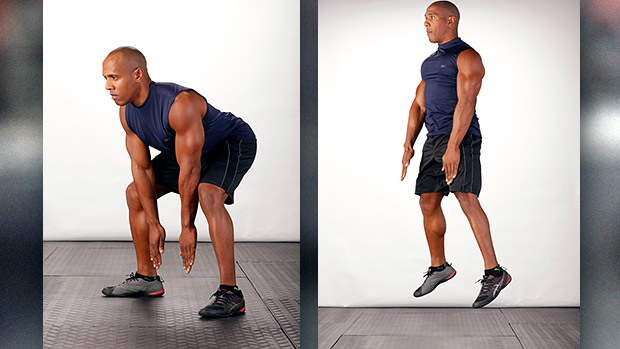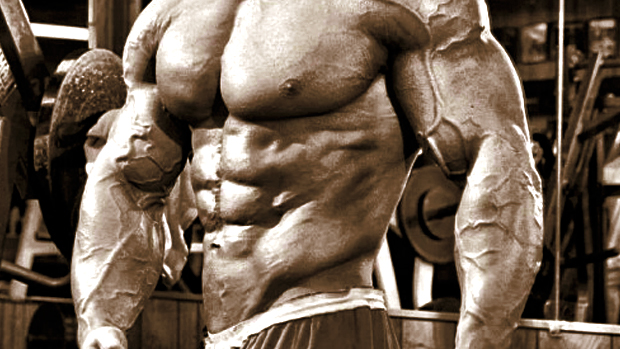The principle of specificity dictates that, in order to do all you can to improve your explosive power, you don't just do exercises that involve moving against high loads, like traditional heavy deadlifts. You also do exercises that require you to move at high speeds.
This is where the deadlift jump come in. It's like a squat jump but performed in a more deadlift-type position, which makes it more hip oriented. In other words, the barbell deadlift is to the barbell squat what the deadlift jump is to the squat jump.
Setup
Stand with your feet roughly shoulder-width apart and your arms at your thighs.
Instructions
- Hinge at your hips and bend toward the floor.
- Keep your back straight and your knees bent at a 15-20 degree angle. Let your arms hang in front of your body, keeping your elbows slightly bent.
- Jump straight up by simultaneously extending your hips and knees.
- Land as lightly and quietly as possible. Return to the starting position. Don't allow your back to round out at the bottom of each rep.
- Each time you set up for the next jump, keep your knees in the same line as your toes. Your knees should not come toward one another at any time. Jump as high as you can on each rep.
Tips
You can add some light load to this movement by holding a medicine ball, dumbbell, or kettlebell.
This exercise is a great dynamic effort-type deadlift movement option.
You can use these as a "contrast set" following deadlifts. For example, you'd perform heavy deadlifts for 3-5 reps, rest about 45 seconds, then do 3-5 deadlift jumps. That's one set. Rest about 3-5 minutes between sets. Do 4 to 6 total sets.





